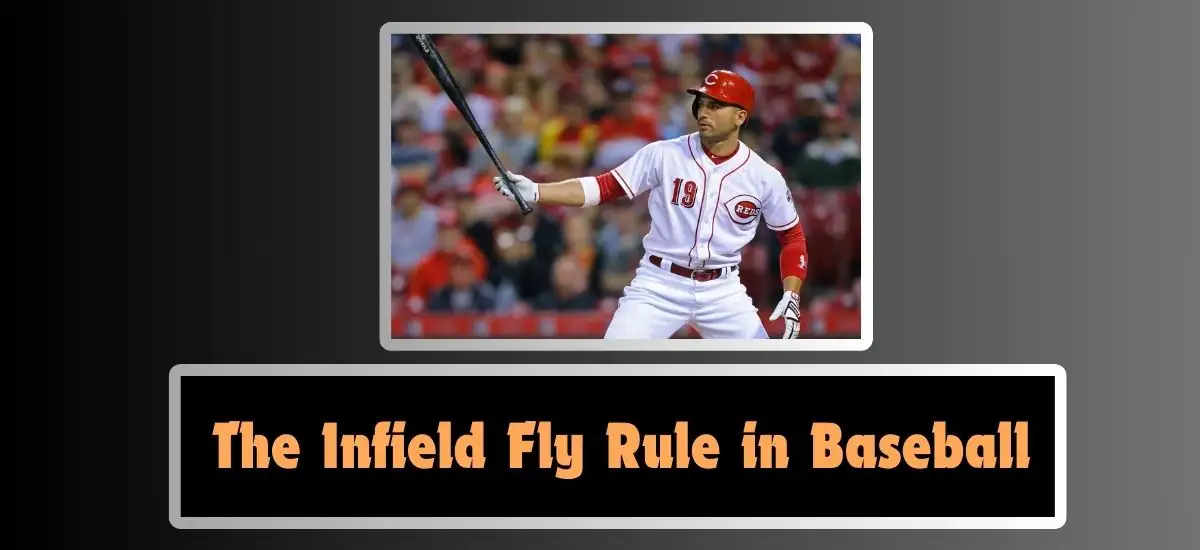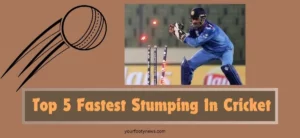
Baseball, often referred to as America’s pastime, has a multitude of rules that can sometimes seem confusing to new fans and seasoned spectators alike. One such rule is the Infield Fly Rule, which plays a crucial role in maintaining fairness and sportsmanship in the game.
Importance of Understanding This Rule:
- Fair Play: Ensures that the defense cannot exploit the situation to their advantage unfairly.
- Game Strategy: Affects both offensive and defensive strategies during a game.
- Fan Knowledge: Enhances the enjoyment and understanding of the game for fans.
In this article, we will delve into the Infield Fly Rule, exploring its definition, historical origins, and implications on the game.
Definition of the Infield Fly Rule
The Infield Fly Rule is a specific rule in baseball designed to prevent defensive teams from making easy double plays at the expense of the offensive team.
Clear and Concise Definition:
- Basic Definition: The Infield Fly Rule is called when a fair fly ball (not a line drive or bunt) can be caught by an infielder with ordinary effort, with runners on first and second, or the bases loaded, and fewer than two outs.
Specific Conditions for the Rule:
- Infield Play: The rule applies when an infielder can catch the fly ball with ordinary effort.
- Runners on Base: Must be runners on first and second, or bases loaded.
- Number of Outs: Less than two outs in the inning.
Purpose and Intention:
- Preventing Unfair Double Plays: The rule prevents the defensive team from intentionally letting the ball drop to create a double or triple play.
- Fairness in the Game: Ensures the game remains fair and competitive, maintaining the integrity of the sport.
Historical Origins
The Infield Fly Rule has a rich history, evolving over time to address specific situations in the game.
Brief History of the Rule:
- Early Baseball: In the early days of baseball, there were no specific rules to prevent infielders from exploiting easy double play opportunities.
- Rule Introduction: The Infield Fly Rule was introduced in the late 19th century to address this issue.
Origins and Evolution:
- Initial Adoption: The rule was first adopted in the 1890s, following incidents where infielders intentionally dropped easy catches.
- Modifications: Over the years, the rule has been refined to cover various scenarios and ensure clarity and fairness.
Key Milestones:
- First Implementation: Officially included in the rulebook in 1895.
- Subsequent Changes: Adjustments were made in the early 20th century to clarify the conditions under which the rule applies.
Key Milestones in the Infield Fly Rule Development
| Year | Milestone |
| 1890s | Introduction of the Infield Fly Rule |
| 1895 | Official inclusion in the rulebook |
| Early 1900s | Refinements and clarifications made |
Conditions for the Infield Fly Rule
Understanding the specific conditions under which the Infield Fly Rule is applied is crucial for both players and fans.
Detailed Explanation of the Conditions:
- Fair Fly Ball: The ball must be a fair fly ball that can be caught by an infielder with ordinary effort. This excludes line drives and bunts.
- Runners on Base: The rule is only invoked when there are runners on first and second, or bases loaded.
- Number of Outs: There must be fewer than two outs in the inning for the rule to apply.
Differences Between Fair and Foul Territories:
- Fair Territory: The rule applies to fly balls hit into fair territory. If the ball lands in foul territory, the rule does not apply.
- Umpire’s Call: The umpire must call “Infield Fly, if Fair,” indicating the rule applies if the ball remains in fair territory.
Umpire’s Role:
- Declaration: The umpire must declare an infield fly by shouting “Infield Fly, batter is out,” ensuring all players are aware of the ruling.
- Immediate Call: This call is made as soon as the umpire determines that the ball can be caught with ordinary effort by an infielder.
Conditions for the Infield Fly Rule
| Condition | Description |
| Fair Fly Ball | Must be a fair fly ball catchable with ordinary effort |
| Runners on Base | Runners on first and second, or bases loaded |
| Number of Outs | Fewer than two outs in the inning |
| Umpire’s Declaration | Umpire declares “Infield Fly, batter is out” |
5. Implications of the Infield Fly Rule
Impact on Game Strategy:
- Offensive Strategy: Runners must be aware that they are not forced to advance, reducing the likelihood of being doubled off.
- Defensive Strategy: Prevents infielders from intentionally dropping the ball to create easy double plays, thus maintaining fair play.
Prevention of Unfair Double Plays:
- Rule’s Intent: The primary intention is to prevent the defensive team from taking advantage of the situation by letting the ball drop and initiating an easy double play.
- Game Integrity: Ensures the game remains competitive and fair, protecting the offensive team’s chances.
Examples of Rule Affecting Game Outcomes:
- Historical Games: There have been several notable games where the Infield Fly Rule significantly impacted the outcome, often preventing potential defensive exploitation.
- Case Studies: Reviewing specific instances helps understand the rule’s practical application and importance.
Implications of the Infield Fly Rule
| Aspect | Impact |
| Offensive Strategy | Runners are not forced to advance |
| Defensive Strategy | Prevents easy double plays |
| Game Integrity | Maintains fairness and competitiveness |
| Historical Impact | Notable games where the rule affected outcomes |
Controversial Infield Fly Rule Calls
Notable Controversial Calls in MLB History:
- 2012 NL Wild Card Game: One of the most controversial infield fly calls occurred during the 2012 NL Wild Card game between the Atlanta Braves and the St. Louis Cardinals.
- 1998 ALCS Game: Another significant instance was during the 1998 American League Championship Series.
Analysis of Contentious Calls:
- 2012 NL Wild Card Game: The umpire called an infield fly on a ball hit to shallow left field, causing confusion and controversy as to whether the rule applied.
- 1998 ALCS Game: A call was made in a high-stakes game that led to intense debate over the rule’s application.
Lessons Learned:
- Clarity and Consistency: These controversial calls highlight the need for clarity and consistency in the application of the Infield Fly Rule.
- Communication: Effective communication between umpires, players, and coaches is crucial to ensure everyone understands the ruling.
Controversial Infield Fly Rule Calls
| Game | Controversy | Outcome |
| 2012 NL Wild Card Game | Call on shallow fly ball to left field | Debate over whether the rule applied |
| 1998 ALCS Game | Infield fly call in a high-stakes game | Intense debate and confusion among players |
Role of the Umpire in the Infield Fly Rule
Responsibilities of the Umpire:
- Judgment Call: The umpire must make a quick judgment on whether a fly ball can be caught with ordinary effort by an infielder.
- Declaration: The umpire declares “Infield Fly, batter is out” to signal the application of the rule.
Communication Between Umpires, Players, and Coaches:
- Clear Signals: Umpires use clear verbal and visual signals to indicate the invocation of the Infield Fly Rule.
- Coordination: Effective communication among the umpiring crew ensures consistency and clarity in enforcing the rule.
Ensuring Correct Application:
- Positioning: Umpires must be well-positioned to make accurate calls on potential infield fly situations.
- Consistency: Consistent application of the rule helps maintain its integrity and fairness across games.
Umpire Responsibilities in the Infield Fly Rule
| Responsibility | Description |
| Judgment Call | Determining if the fly ball can be caught with ordinary effort |
| Declaration | Announcing “Infield Fly, batter is out” |
| Clear Signals | Using verbal and visual signals to communicate the rule |
| Positioning | Ensuring proper positioning to make accurate calls |
| Consistency | Applying the rule consistently across games |
Understanding the Rule’s Nuances
Common Misconceptions About the Infield Fly Rule:
- Misconception 1: The rule only applies to fly balls hit within the infield. Reality: The rule can apply to fly balls hit into shallow outfield if an infielder can catch it with ordinary effort.
- Misconception 2: The ball must be caught for the rule to apply. Reality: The rule applies as soon as the umpire judges that the ball could be caught with ordinary effort, regardless of whether it is actually caught.
Situations Where the Rule Does Not Apply:
- Less Than Two Runners on Base: The rule does not apply if there are fewer than two runners on base.
- Two Outs: The rule is not invoked with two outs, as the double play risk is not present.
Clarifications on Complex Scenarios:
- Shallow Outfield Fly Balls: Fly balls hit to shallow outfield areas can be subject to the Infield Fly Rule if an infielder can catch them with ordinary effort.
- Wind and Weather Conditions: Umpires must consider factors like wind and weather that might affect an infielder’s ability to catch the ball.
Clarifications on the Infield Fly Rule
| Scenario | Clarification |
| Fly ball in shallow outfield | Rule applies if an infielder can catch with ordinary effort |
| Less than two runners on base | Rule does not apply |
| Two outs | Rule is not invoked |
| Wind and weather conditions | Umpires must consider these factors |
Comparing the Infield Fly Rule to Other Baseball Rules
Similarities and Differences with Other Rules:
- Fairness Rules: The Infield Fly Rule, like other rules such as the dropped third strike rule, aims to maintain fairness and prevent exploitation.
- Unique Applications: While the Infield Fly Rule is unique in its specific application to fly balls with runners on base, other rules address different scenarios of potential unfair play.
Comparison with Rules in Other Levels of Baseball:
- College Baseball: The Infield Fly Rule is applied similarly in college baseball, though there may be slight variations in interpretation.
- Little League: The rule is also present in Little League, emphasizing its fundamental role in maintaining fairness across all levels of play.
Impact of the Rule in Different Baseball Leagues:
- Major Leagues: In the MLB, the rule is strictly enforced to uphold game integrity.
- Minor Leagues and Amateur Leagues: The rule is also enforced, though the level of scrutiny and interpretation can vary slightly.
Comparison of the Infield Fly Rule Across Leagues
| Level | Application | Impact |
| Major Leagues (MLB) | Strictly enforced | Maintains high game integrity |
| College Baseball | Similar enforcement with slight variations | Ensures fairness in competitive play |
| Little League | Emphasized for fundamental learning | Teaches young players about fairness |
| Minor Leagues | Enforced with similar rules to MLB | Prepares players for major league play |
Educational Resources
Recommended Resources for Learning More:
- Books: “The Official Rules of Baseball” by David Nemec
- Videos: “Infield Fly Rule Explained” by MLB on YouTube
- Online Articles: Articles from reputable sports websites like ESPN and MLB.com
Importance of Ongoing Education:
- For Players: Continuous learning helps players understand and apply the rules correctly during games.
- For Fans: Enhances the enjoyment and understanding of the game, making viewing experiences more enriching.
Educational Resources for the Infield Fly Rule
| Resource Type | Recommended Resource |
| Book | “The Official Rules of Baseball” by David Nemec |
| Video | “Infield Fly Rule Explained” by MLB on YouTube |
| Online Article | Articles on ESPN and MLB.com |
Conclusion
Recap of Key Points:
- Understanding the Rule: The Infield Fly Rule is crucial for preventing unfair double plays and maintaining game fairness.
- Role of Umpires: Umpires play a key role in applying the rule accurately and consistently.
- Historical Significance: The rule has evolved to address specific scenarios and ensure competitive integrity.
Final Thoughts on the Infield Fly Rule:
- Significance: The Infield Fly Rule is fundamental to the fairness of baseball, impacting both strategy and gameplay.
- Invitation for Reader Engagement: We encourage readers to share their opinions or experiences related to the Infield Fly Rule and its impact on the game.
FAQs
Common Questions and Answers:
- What is the Infield Fly Rule in baseball?
- The Infield Fly Rule is called to prevent infielders from intentionally dropping a catchable fly ball to create easy double plays when there are runners on first and second or bases loaded, and fewer than two outs.
- When does the Infield Fly Rule not apply?
- The rule does not apply if there are fewer than two runners on base or if there are two outs.
- Why was the Infield Fly Rule created?
- It was created to maintain fairness and prevent defensive players from taking advantage of offensive situations by allowing easy double plays.
- How do umpires communicate the Infield Fly Rule?
- Umpires declare “Infield Fly, batter is out” and use visual signals to communicate the rule’s application.
- Can the Infield Fly Rule be called on a fly ball to the outfield?
- Yes, if the ball can be caught with ordinary effort by an infielder in shallow outfield.
Read more: What Is A Tight End In Football?








